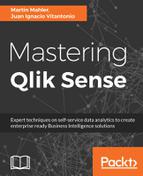The goal of every new Qlik Sense project is to ensure to have the business user in mind. Approach the business user themselves, not the project manager or the stakeholder, and try to understand how he or she is conducting analytics at the current stage and what the pain points they experience with it are. This may involve shadowing them or even doing their job for a day.
Understanding where the lack of efficiency lies is key to gathering requirements in Qlik Sense. In QlikView, it was always straightforward: you need a dashboard, let's design it, and there you go. If you want to empower the business to do analytics themselves, you need to start understanding how they work. It is also crucial to identify an appetite for data analytics of the business: are they happy doing analytics themselves or would they instead have everything provided for them? Usually, users in operational aspects of a company are less concerned about solving problems and figuring out insights in the data-they wish to get relevant information provided to them in the most timely and most natural way possible. For managers or analysts, this looks exactly the other way around: they want to be able to quickly and easily create analytics themselves to answer a question they have about their data.
Another important aspect is to understand the level of technical sophistication. If there is a lack of technical capabilities within a project or a company, there is no point throwing set analysis at them or introducing to them the capacity of interactively creating data models in the load script. Keep it simple for them by using managed Master Key Items. On the other hand, if you feel the users are technically advanced and have a basic understanding of coding, this has to be embraced. Introduce them to the power of set analysis and the scripting techniques, and you will see beautiful dashboards being created.
Lastly, the most critical aspect of requirement gathering relevant to Qlik Sense and missing in QlikView is to understand what devices and how the Qlik Sense app will be used. While QlikView was almost exclusively available on desktop, Qlik Sense can now be utilized on mobile devices on the go. Depending on where and how it will be used, there will be different considerations on the user experience design, the context of the displayed data, as well as the integrability with other platforms and technologies (for example, you can't export to XLS on your iPad). This is explained in more detail a little later in the Qlik Sense on Mobile section.
